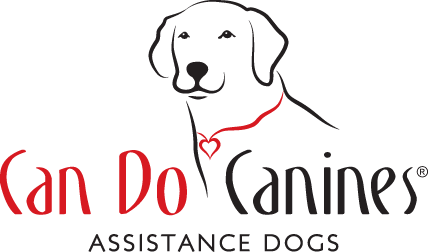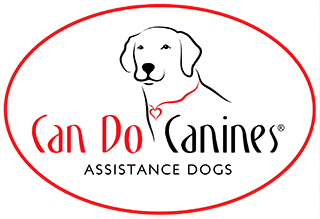By Caren Hansen, Can Do Canines Marketing and Communication Manager -
I have a legitimate mutt. After rescuing her, we completed a DNA test, which reported 15 dog breeds. Mutt-O-Rama!
I love her deeply and can bring her to work, where most of my co-workers bring their dogs too. Many of these dogs also have interesting genetics and history. Yet, we work somewhere that has a dog breeding program—at Can Do Canines, where we raise and train assistance dogs and place them free of charge with people with disabilities.
Domestic animal breeding is a hot topic … and rightly so. I’m often disappointed when friends and relatives wanting a loving pet don’t consider adopting a shelter animal. Overbreeding, animal neglect, and genetic manipulation are issues often associated with breeding programs.
However, while we at Can Do Canines strive to use shelter dogs for our cause, hard facts have proven that these dogs aren’t as successful as those bred for this particular purpose. Our records show our purpose-bred dogs have double the success rate of becoming assistance dogs. Through careful review of genetics, appropriate exposures, and expert education, we can create dogs ideal for work.
Clients rely on us to match them with the right dog for the job. Parents of a child with autism depend on an assistance dog tethered to the child to keep that kiddo from bolting into traffic. Telling that family we aren’t confident the dog will consistently perform that skill is unacceptable.
Also, clients with Type 1 diabetes need the dog to alert them to low blood sugar. Just one time of the dog not performing this life-saving skill could be potentially catastrophic.
So while we understand the arguments against breeding dogs, please understand our nonprofit is using its resources to most efficiently and effectively bring new dogs into the world to change lives for those who need help.
Although I and others here—including the talented trainers—try to imitate some traits and skills of assistance dogs with our own pet dogs, some of them will never behave like a Can Do Canine.
And for me, that’s okay. I’m good with snuggles from my mutt.

 The Impact of an Ordinary Day
The Impact of an Ordinary Day 



